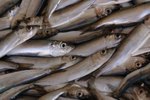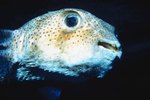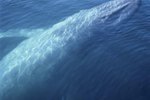
Penguins have relatively predictable diets, and even though it varies from species to species, they all feed on primarily the same things. They're all built for hunting in the sea, and that influences their diet. Certain sea creatures, then, make up most of a penguin's typical prey.
Seafood Lovers
These flightless birds aren't built to hunt on land, so their diets are largely determined by necessity -- they subsist on seafood. Their prey generally consists of fish and krill, though sometimes small squid may also be on the penguin's menu. Krill is a crustacean similar to shrimp, and because it's typically found in large groups, it's a staple in the diets of sea predators like penguins and whales.
Variations by Species
There are 17 species of penguin, and they don't all live in the Antarctic. Penguins are spread out across the Southern Hemisphere, living in areas like South Australia and the Galapagos Islands close to the equator. Naturally, a penguin's diet varies slightly depending on where they live, as certain types of aquatic prey aren't always as prevalent in some areas as they are in others. For example, the emperor penguin doesn't rely on eating krill as much as species like the Adelie penguin.
Hunting for Food
Penguins may be stuck waddling on land, but in the water, they're fast and efficient hunters. These sleek, aerodynamic creatures glide through the water at speeds up to 16 miles per hour -- they can reach top speed in less than a second, enabling them not only to catch prey, but to avoid being eaten themselves by predators like the leopard seal. Cutting through the water at these high speeds, a penguin can gobble up krill at a rate of two crustaceans per second.
Secondhand Prey
Not all penguins catch their prey directly -- baby penguins enjoy their meals secondhand. Baby penguins are covered in fluffy down feathers, which prevent them from hunting for their own food. When they're ready to eat, then, they have to ask their mothers or fathers. When a baby penguin pecks at his parent to ask for food, the parent regurgitates into the baby's mouth, feeding him a mixture of whatever prey he had in his belly.
References
Photo Credits
-
Jupiterimages/Photos.com/Getty Images
Writer Bio
Tom Ryan is a freelance writer, editor and English tutor. He graduated from the University of Pittsburgh with a degree in English writing, and has also worked as an arts and entertainment reporter with "The Pitt News" and a public relations and advertising copywriter with the Carnegie Library of Pittsburgh.




